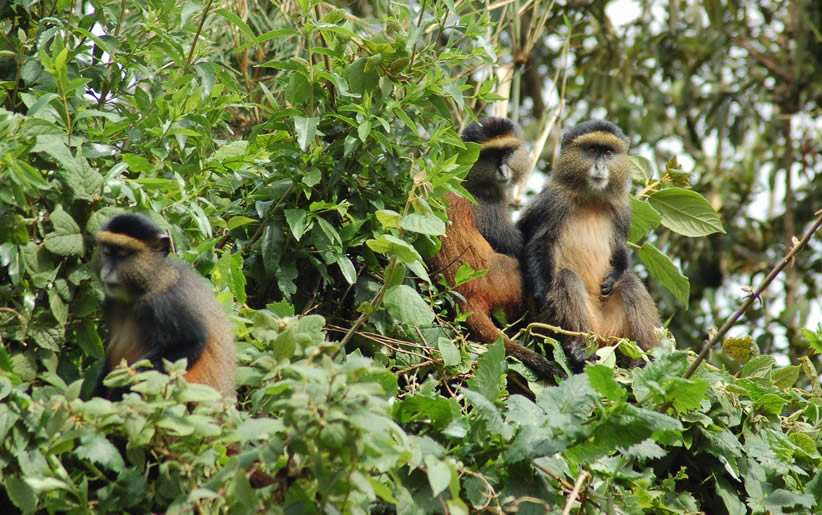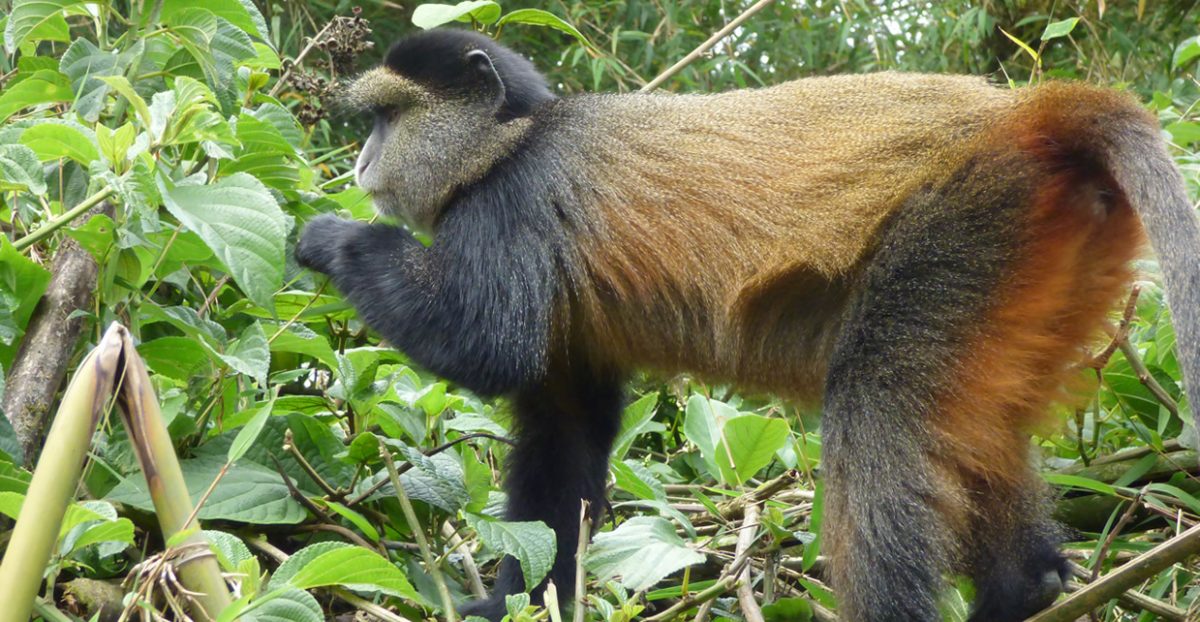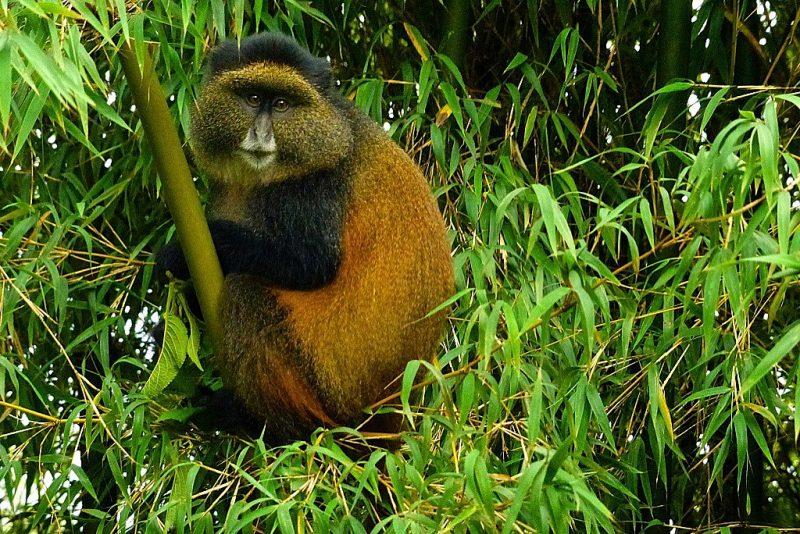Golden monkeys, with their captivating appearance and intriguing behaviors, have long been a subject of fascination for nature enthusiasts and researchers alike. Found in the lush forests of Central and East Africa, these unique primates possess a distinct golden coat that sets them apart from their primate relatives. In this blog post, we will delve into the captivating world of golden monkeys, exploring their habitat, characteristics, social structure, and conservation status.
The Splendor of Appearance:
Golden monkeys, scientifically known as Cercopithecus kandti, are renowned for their remarkable physical features. Their name perfectly describes their captivating golden-orange fur, contrasting with dark limbs and a long, luxurious tail. This striking coloration, combined with their expressive facial features, makes them a true marvel to behold.

Habitat and Distribution:
Golden monkeys primarily inhabit the montane and bamboo forests of Central and East Africa. They can be found in specific regions of Rwanda, Uganda, and the Democratic Republic of Congo. These monkeys are adapted to life in high-altitude environments, where they thrive in the dense vegetation and cooler temperatures.
Social Structure and Behavior:
Golden monkeys are highly social animals, living in groups of up to 30 individuals. These groups typically consist of one dominant male, several females, and their offspring. Interestingly, they exhibit a polygamous mating system, where the dominant male has exclusive breeding rights. The groups’ cohesion is maintained through intricate social interactions, including grooming, vocalizations, and playful behaviors.
Diet and Foraging:
These primates have a diverse diet, consuming a range of vegetation, including bamboo shoots, leaves, fruits, and flowers. They are known for their unique feeding behavior of stripping leaves from branches, using their hands and teeth with remarkable dexterity. This specialized feeding strategy allows them to exploit their bamboo-dominated habitats efficiently.

Conservation Status and Threats:
Golden monkeys face numerous threats to their survival. Habitat loss due to deforestation, illegal logging, and land encroachment poses a significant risk to their populations. Additionally, they are vulnerable to hunting and the illegal wildlife trade. Several conservation organizations and national parks have been actively involved in protecting these primates, implementing measures to safeguard their habitats and raise awareness about their importance.
Ecotourism and Conservation Efforts:
Ecotourism has played a crucial role in both raising awareness and generating funds for golden monkey conservation. Tourists visiting the protected areas have the opportunity to observe these remarkable creatures in their natural habitat while contributing to local communities and conservation initiatives. Proper management and sustainable tourism practices ensure that human interactions have minimal impact on the monkeys’ behavior and well-being.

Where can you see Golden Monkeys?
Golden monkeys are residents in Uganda’s Mgahinga Gorilla National Park in kisoro district. Mgahinga is located in the southwestern part of the country and is part of the larger Virunga Mountains. This region is where Uganda, Rwanda, and the Democratic Republic of the Congo share a common wildlife paradise. Mgahinga Gorilla National Park is known for its population of endangered mountain gorillas. However, it is also home to a significant number of golden monkeys.
Mgahinga Gorilla National Park offers guided trekking experiences to observe golden monkeys in their natural habitat. These monkeys have a striking golden fur and unique behaviors, making them a popular attraction for wildlife enthusiasts. The park authorities and local tour operators can provide more information on specific trekking opportunities and guidelines for encountering golden monkeys safely.
Please note that it’s always a good idea to check the current weather and travel conditions. As well check the necessary permits or regulations before planning a visit to any national park or wildlife area.

When is the best time to do Golden Monkey tracking?
The best time to do golden monkey tracking is generally in the early morning. Golden monkeys are diurnal creatures, meaning they are most active during the day. They tend to be more active in the morning hours when they are searching for food and engaging in social interactions.
It’s important to note that the specific optimal time for golden monkey tracking varies depending on the location/ season. It’s always a good idea to check with local tour operators or wildlife authorities in the specific area where you plan to do the tracking. They will have the most up-to-date information and can provide guidance on the best time to maximize your chances of observing golden monkeys in their natural habitat.
Book a primate safari here
Conclusion:
Golden monkeys, with their unique appearance and captivating behaviors, are a treasure of Africa’s forests. As we strive to protect and conserve Earth’s ecosystems, it’s essential to appreciate/ understand the importance of these remarkable creatures. Through conservation efforts, research, and responsible tourism, we can ensure a brighter future for the golden monkeys and their delicate habitats, preserving their beauty for generations to come.







